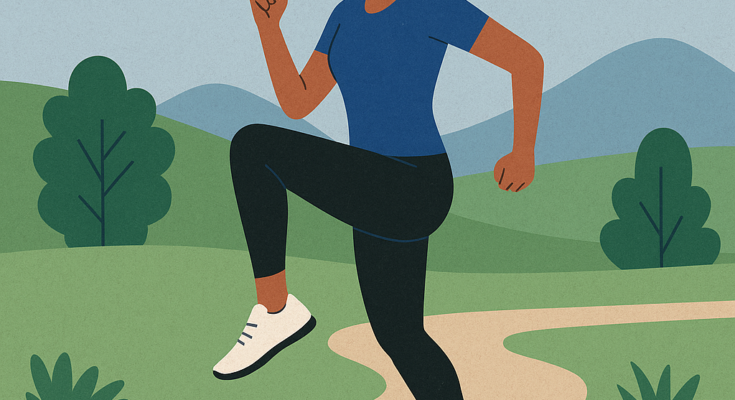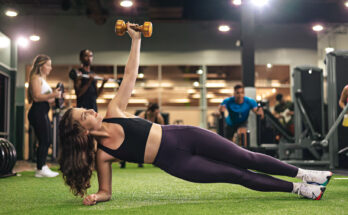In today’s fast-paced world, maintaining a healthy and active lifestyle is more important than ever. With rising levels of stress, sedentary jobs, and unhealthy diets, people are facing increased risks of chronic diseases like diabetes, obesity, and heart conditions.
But the good news? Fitness and active living can help prevent these problems and improve your overall quality of life.
Active living isn’t about being a professional athlete. It’s about making conscious, consistent choices to move more, sit less, and fuel your body with the right foods.
The Physical Benefits of Staying Active
1. Boosts Heart Health
Regular physical activity strengthens your heart muscle, improves circulation, and reduces bad cholesterol levels. It helps lower blood pressure and decreases the risk of cardiovascular diseases.
2. Builds Muscle & Bone Strength
Weight-bearing and resistance exercises help build muscle mass and bone density. This is especially important as we age to prevent osteoporosis and maintain functional mobility.
3. Supports Weight Management
Whether your goal is to lose fat or maintain a healthy weight, exercise helps burn calories and boosts your metabolism — even at rest.
4. Enhances Flexibility and Balance
Activities like yoga, Pilates, or even simple stretching improve your range of motion and balance, reducing the risk of falls or injuries.
The Mental and Emotional Impact of Fitness
Physical health is only one part of the equation. Regular activity significantly contributes to better mental health and emotional well-being.
1. Reduces Stress and Anxiety
Exercise releases endorphins — natural chemicals in the brain that relieve stress and promote a sense of happiness. A simple walk can help clear your mind and reduce anxiety.
2. Improves Sleep Quality
Active individuals often experience deeper and more restful sleep. Just avoid high-intensity workouts too close to bedtime.
3. Boosts Confidence and Self-Esteem
Achieving small fitness goals — like completing your first 5K or sticking to a workout routine — can greatly enhance your self-image and confidence.
4. Fights Depression
Regular movement has been proven to reduce symptoms of depression. It encourages mindfulness, increases social interaction, and helps create a sense of accomplishment.
Types of Fitness Activities to Try
The best workout is the one you enjoy — and stick with. Here are some popular fitness activities to consider:
1. Cardiovascular Exercises
These include walking, running, cycling, swimming, or dancing. They improve heart health and burn calories effectively.
2. Strength Training
Lifting weights, using resistance bands, or bodyweight exercises (like push-ups) help tone muscles and improve metabolism.
3. Flexibility & Mobility Workouts
Yoga, stretching, and foam rolling keep your body supple and reduce the risk of injury.
4. Functional Fitness
Exercises that mimic real-life movements (like squats, lunges, and carries) help improve daily performance and reduce joint strain.
Making Active Living a Part of Your Daily Life
You don’t need a gym membership or fancy equipment to live an active life. Here are practical ways to move more every day:
1. Take Short Walks
A 10-minute walk after every meal can boost digestion and increase your daily steps.
2. Use the Stairs
Skip the elevator and choose the stairs — it’s a simple yet effective way to get your heart pumping.
<3. Desk Workouts
Stand up and stretch every 30 minutes. Try chair squats or seated leg raises while working from home or in the office.
4. Active Commuting
Walk or bike to nearby places instead of driving. You’ll save fuel, reduce emissions, and stay fit.
5. Make it Social
Join a fitness class, go hiking with friends, or dance with your kids — physical activity can be fun and social too!
Your Body for an Active Lifestyle
Fitness isn’t just about exercise — nutrition plays a key role too.
1. Eat Balanced Meals
Include lean proteins, complex carbs, healthy fats, and plenty of fruits and vegetables. This supports energy, recovery, and muscle repair.
2. Stay Hydrated
Water is essential for regulating temperature, lubricating joints, and maintaining energy. Aim for 2–3 liters per day, more if you’re very active.
3. Don’t Skip Meals
Consistent eating keeps your metabolism running and prevents energy crashes or overeating later.
Staying Motivated on Your Fitness Journey
Staying active is a long-term commitment. Motivation may dip, but here’s how to stay on track:
- Set Realistic Goals: Start small — like 15 minutes of walking daily — and build from there.
- Track Your Progress: Use a fitness journal or app to monitor improvements.
- Celebrate Small Wins: Every workout counts. Give yourself credit!
- Find a Buddy: Accountability partners can keep you committed and make workouts more enjoyable.
- Be Kind to Yourself: Missed a workout? That’s okay. Reset tomorrow.
Conclusion: Fitness is a Lifestyle, Not a Destination
Fitness and active living aren’t about quick fixes or crash diets — they’re about building a sustainable, joyful lifestyle that supports your body and mind. Whether you’re just getting started or leveling up your routine, remember: consistency beats perfection.
So take that first step today — walk, stretch, dance, lift — whatever moves you. Because a healthier, happier you starts with movement.



